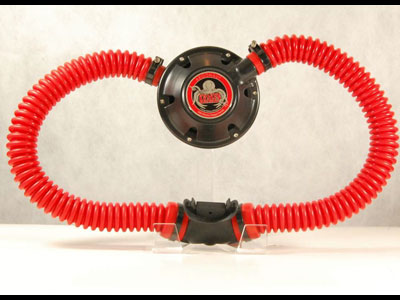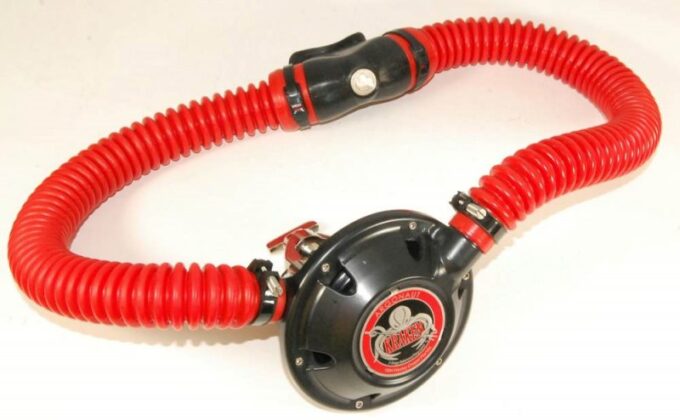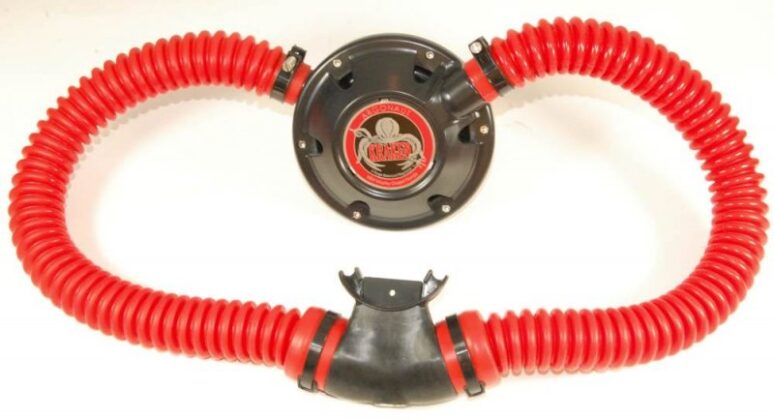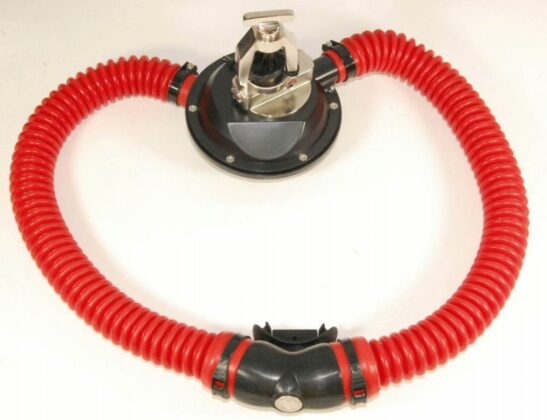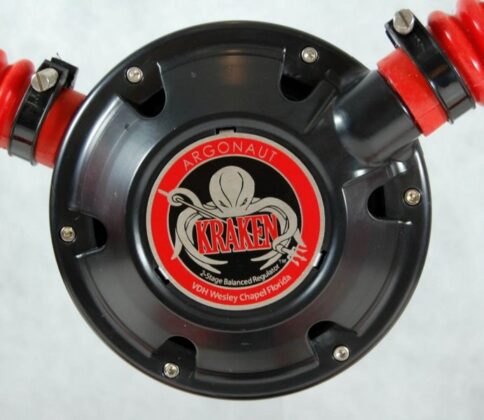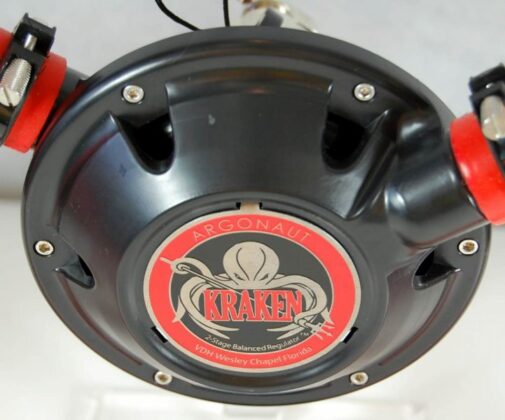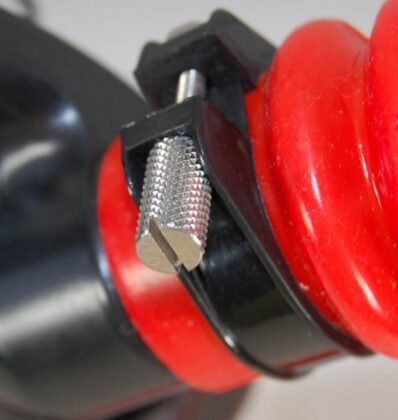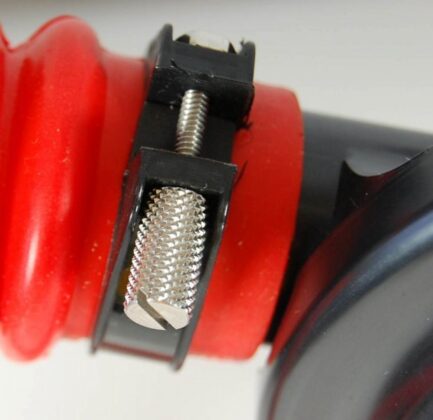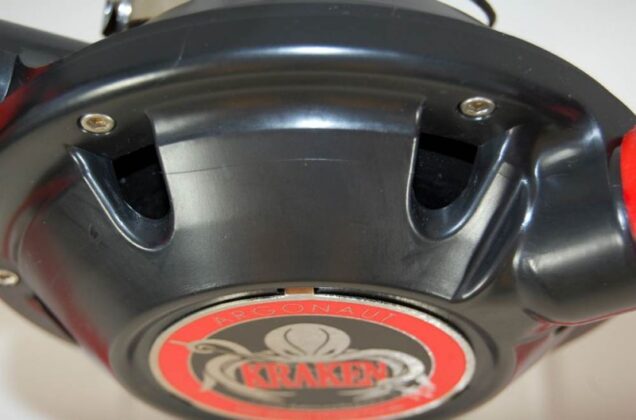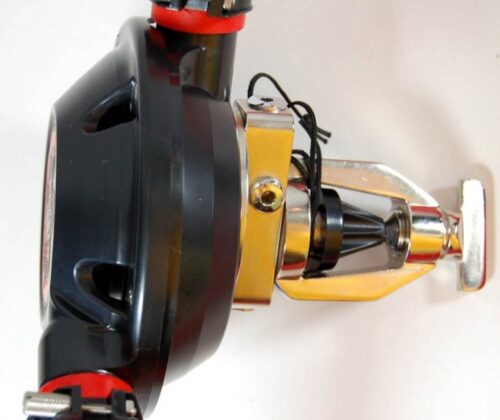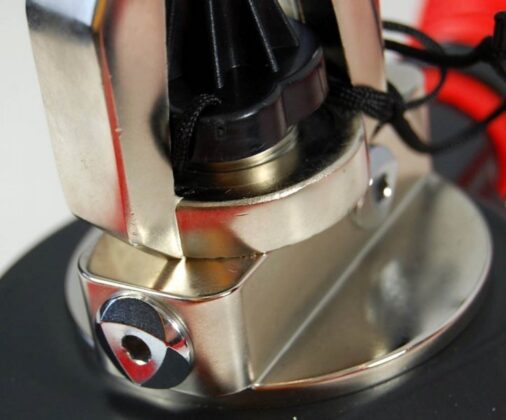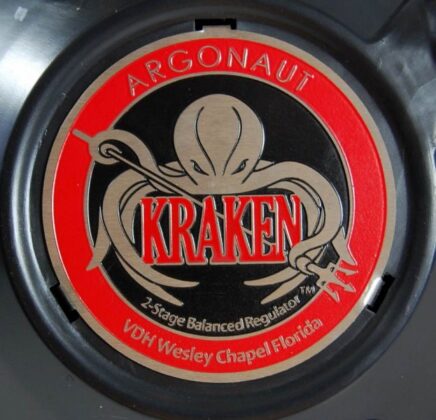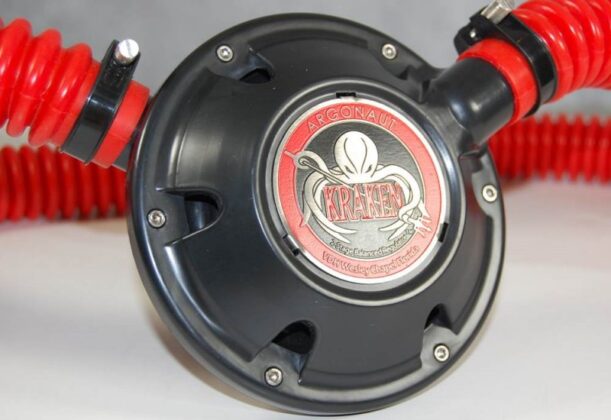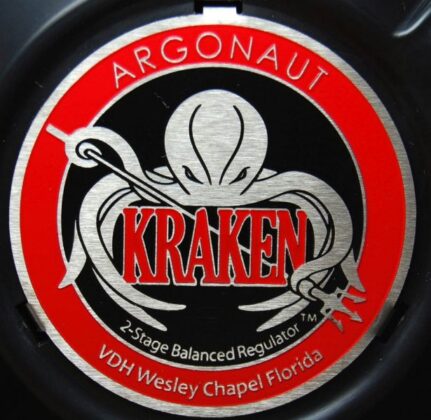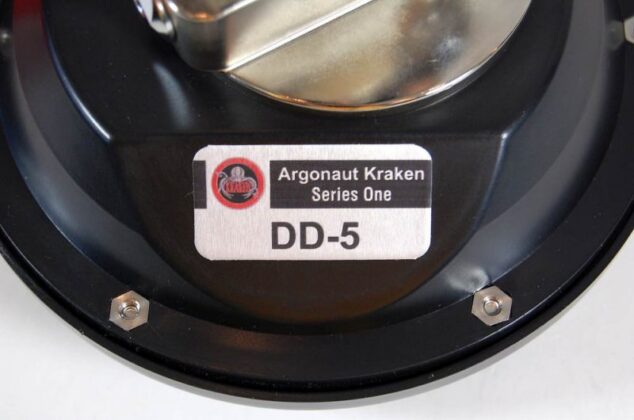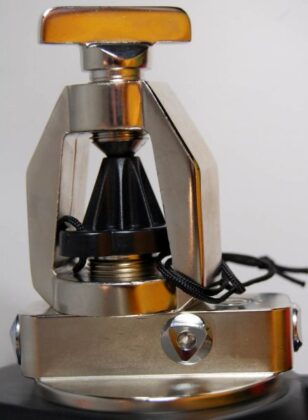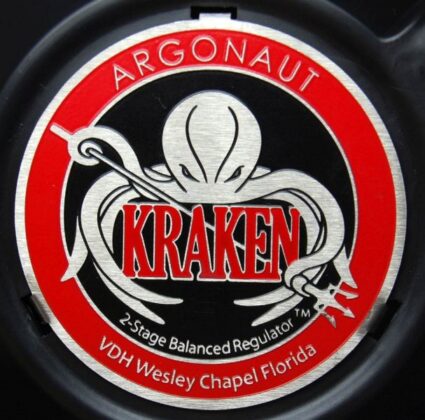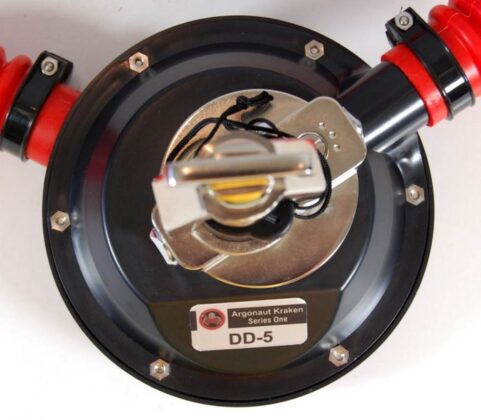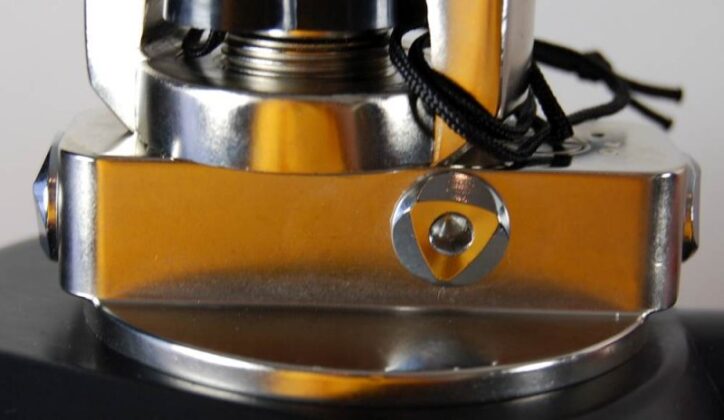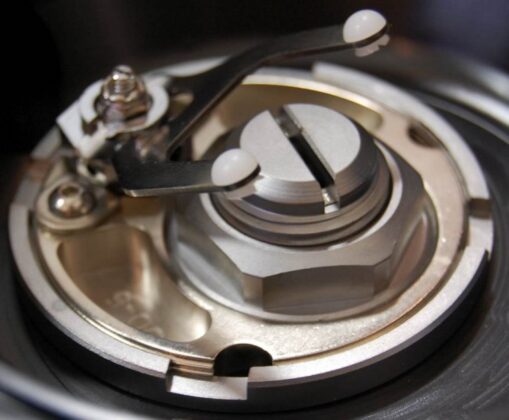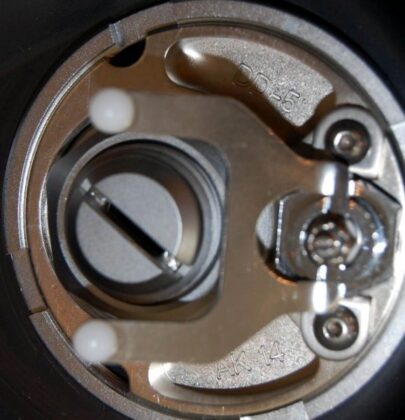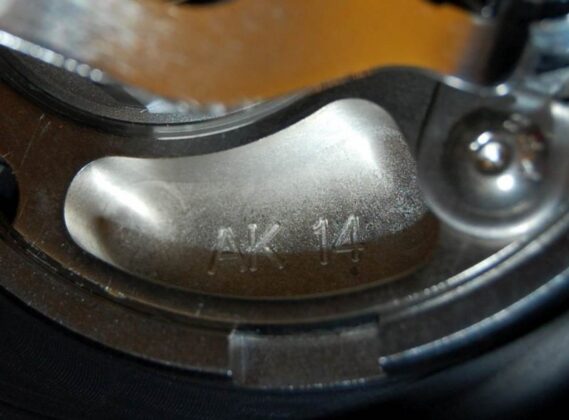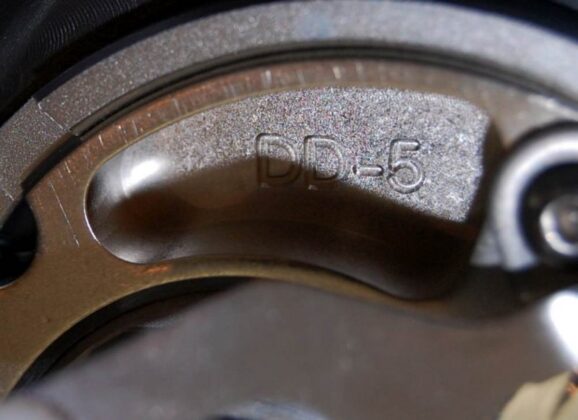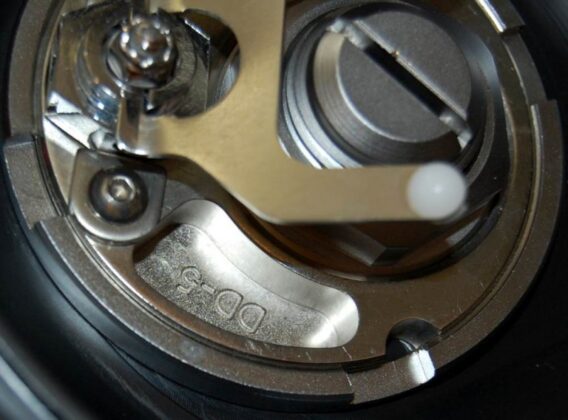Argonaut Kraken DD-05.
Bryan Pennington (Vintage Double Hose) and Luis Heros have plenty of experience with a first stage in the form of a Phoenix and a second stage in the form of the HPR (a descendant of the second stage in the Pegasus project).
In 2012 it was time to take all the good ideas about the then unnamed regulator and actually build a few. In the summer of 2012 , Bryan and Luis made plans to try and have several prototypes ready for their November Cozumel trip. The first four prototypes were bought by Bryan, Rob Studnicka (www.thescubamuseum.com), Jim Louvau, and Luis. For the first four prototypes they just used vintage metal cans, but they knew that the first step was to test the main body.
They just needed to test the new integrated design.
With some adjustments they were able to salvage the first four prototypes and they dove them in Cozumel. They took some of them to 155 feet.
The first four machined prototypes came in with lots of machining errors (and one drawing error). With help from Herman Mowrey (www.scubatools.com) they were able to correct most of the machining error.
After that a second prototype serie of seven regulators was produced in june of 2013 from a different machine shop than the previous years. CG-45.com Collection has the prototypes 3S1 and the 3S7.
After all tests, the production of Kraken Argonaut can be started.
Needless to say that cost a lot of cash. Bryan approached 12 people asking for cold hard cash to get the prototypes made. In exchange they would get the 1st production regulators. At the time all they had were good ideas and Luis drawings for the main body and 2nd stage volcano orifice.
Bryan stated calling those 12 divers The Dirty Dozen and the serial numbers on the 1st 12 regulators are DD-1 to D-12 especially for them.
The funding from the Dirty Dozen let Bryan starts the production trials and gave them the prototypes that the test divers were using in various places on the globe.
The first machine shop never delivered on what they promised. To continue the project Bryan needed more capital and that is where the “Dirty Dozen” came in. Without their funding it would have been a lot more difficult to move forward.
They had a design (no project name yet), but without the funding it wouldn’t be possible to make more parts. The parts they had worked, but were not good enough for a final product.
After that the story kept on getting complicated with two more machine shops bidding on the project, but both of them delivered at some point defective parts. There were no design changes since the beginning, but Luis made several drawing changes to clarify details that the machine shops messed up in the samples.
http://vintagedoublehose.com/forum/viewtopic.php?f=26&t=7724&sid=87088830dd6843f02d574a998dcf91f9

